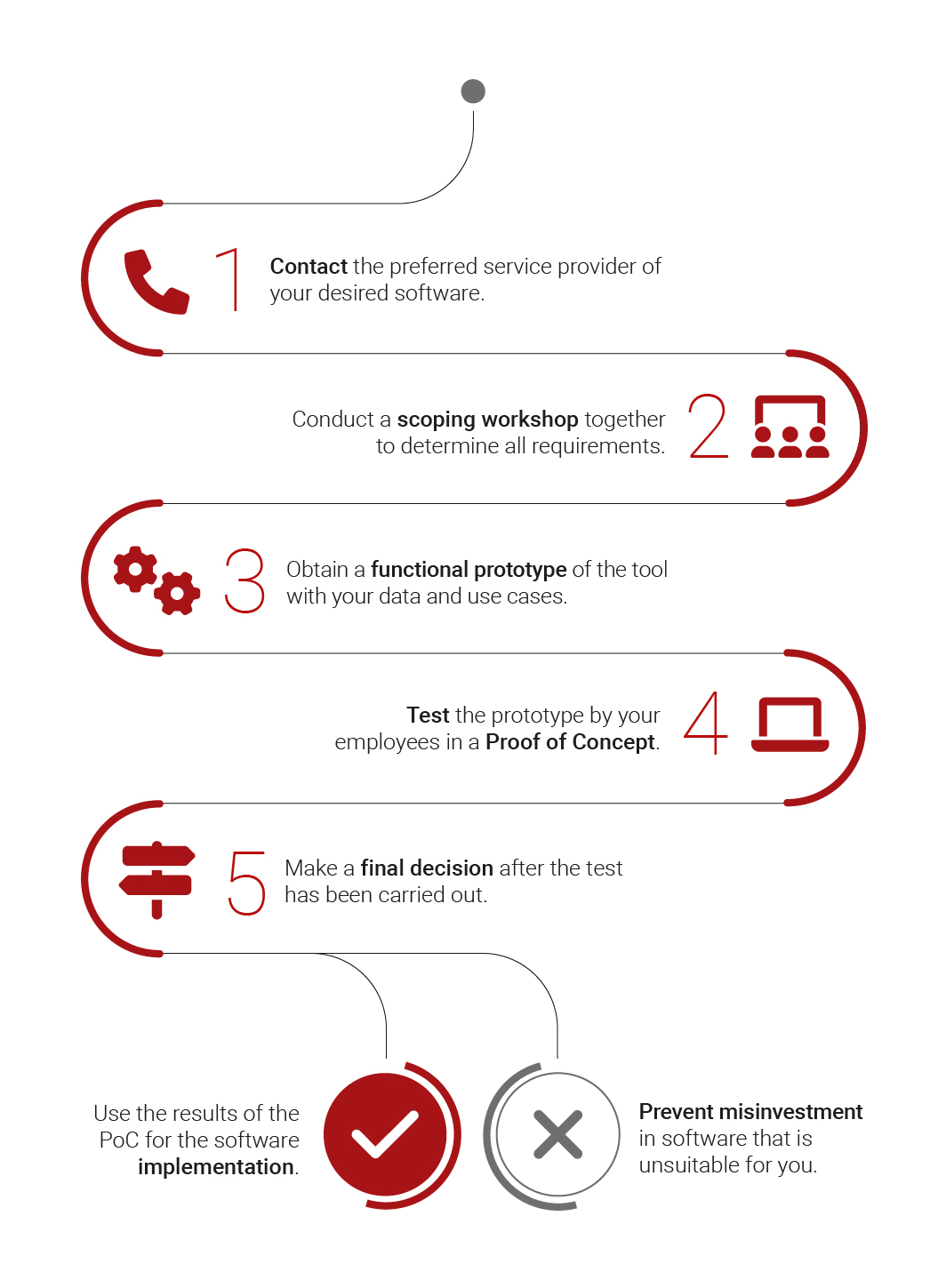The PoC gives you the chance to get decision-makers on board early on in the selection process. You can incorporate important topics for managing directors, board members, and other stakeholders into the system already during the test phase.
Think about how management would react if you were already able to create and present your first reports, for example. Or if you can demonstrate the system to them live in real time, including the way it would actually appear if you were to use it?
You also involve your users closely and initiate the change process successfully right from the start. By incorporating the actual requirements of future users, you promote buy-in and added value.
This gives not only you, but also everyone else involved, the right feeling. But above all, it gives you a solid foundation for your decision, since you would have already seen that it works.



